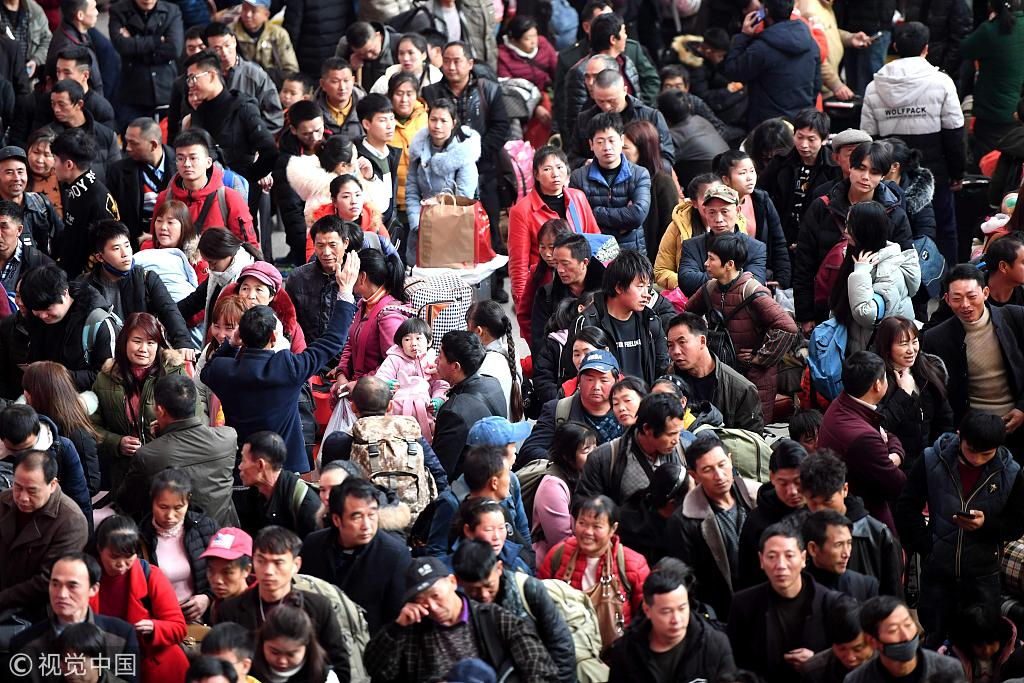
Opinion
15:30, 22-Jan-2019
Opinion: Is China facing a crisis in the face of dipping population?
Updated
10:26, 23-Jan-2019
Xu Sicong

Editor's note: The article is based on an interview with Bai Ming, a research fellow at China's Ministry of Commerce. The article reflects the expert's views, and not necessarily those of CGTN.
China's population growth reached a new low in 2018, registering 3.81 per thousand, according to statistics released by China's National Bureau of Statistics (NBS) on Monday.
The concern over the country's looming population crisis is not something new. China's population growth has been on the downward trend since the late 1980s and is expected to enter negative territory in 2030. Bai Ming, a research fellow at the Ministry of Commerce, is, however, not too pessimistic about the situation.
In an interview with CGTN, he drew attention to the 15.23 million newborns in the country last year, believing that the figure, despite hitting a new low and witnessing a 0.2-million decrease on 2017, is still encouraging.
Moreover, he noted that China's demographic dividend had not run out yet, as the NBS also revealed that China's current working population, aged between 16 and 59 years old, was close to 900-million, accounting for 64 percent of the national total.
Nevertheless, the country does face certain demographic challenges, which some attribute to its one-child policy that was introduced in the late 1970s and early '80s. While Bai does not deny the link, he believes that the policy was based on China's economic situation at the time, arguing that the low income level and shortage of a wide range of resources meant that a population explosion would have had a crippling effect on the national economy.

Passengers at Fuzhou Railway Station, China's Fujian Province, January 21, 2019. /VCG Photo
Passengers at Fuzhou Railway Station, China's Fujian Province, January 21, 2019. /VCG Photo
However, as the situation evolved, China did later see the need to relax its population policy. In 2015, the one-child policy was scrapped, allowing each family to have up to two children.
Despite the stimulus, China's birthrate received only a short-term boost. Its lessened effect since 2017 has stoked fear among some, as well as flotation of the idea of the complete removal of caps on the number of children a family can have.
Bai dismissed such a suggestion, saying policymakers tend to adopt a discreet approach to the issue and as it would be hard to foresee how the idea would play out if implemented, it is highly unlikely to be adopted anytime soon.
Moreover, he does not think people should be fixated on the size of the population and pointed out that as countries get wealthier, people's willingness to have more children tends to decrease. A similar pattern can be seen in developed countries, such as Japan and Europe.
While recognizing the importance of keeping an eye on the size of the population and keeping it relatively stable, he also placed emphasis on improving "the quality of the population," which is another issue the government is currently working on. And the ways to achieve that include providing better education and training in order to produce a more skilled workforce.
Bai also noted that not many young people today are keen on having a second child due to concerns about the increasing costs of raising children, reflecting a shift in mindset among Chinese that attaches more importance to better education for their children. "People do not just want to have more children now. They want their children to be more educated, more skilled and more virtuous, which is in general 'costly.' This, again, would be a positive way to look at the issue," he said.
Looking forward, Bai expressed the belief that in order to encourage Chinese to have more than one child, the government needs to cultivate the willingness to do so among people by creating better social conditions – for example, by providing better medical care and more jobs to help reduce costs for raising kids.
(If you want to contribute and have specific expertise, please contact us at opinions@cgtn.com.)

SITEMAP
Copyright © 2018 CGTN. Beijing ICP prepared NO.16065310-3
Copyright © 2018 CGTN. Beijing ICP prepared NO.16065310-3